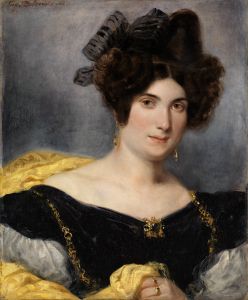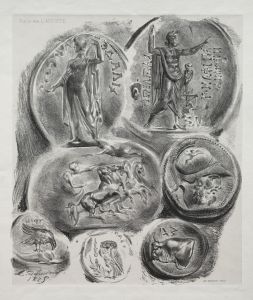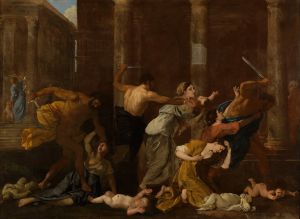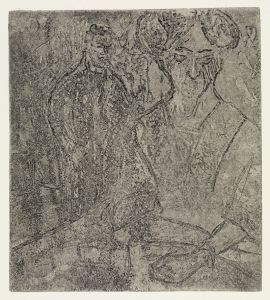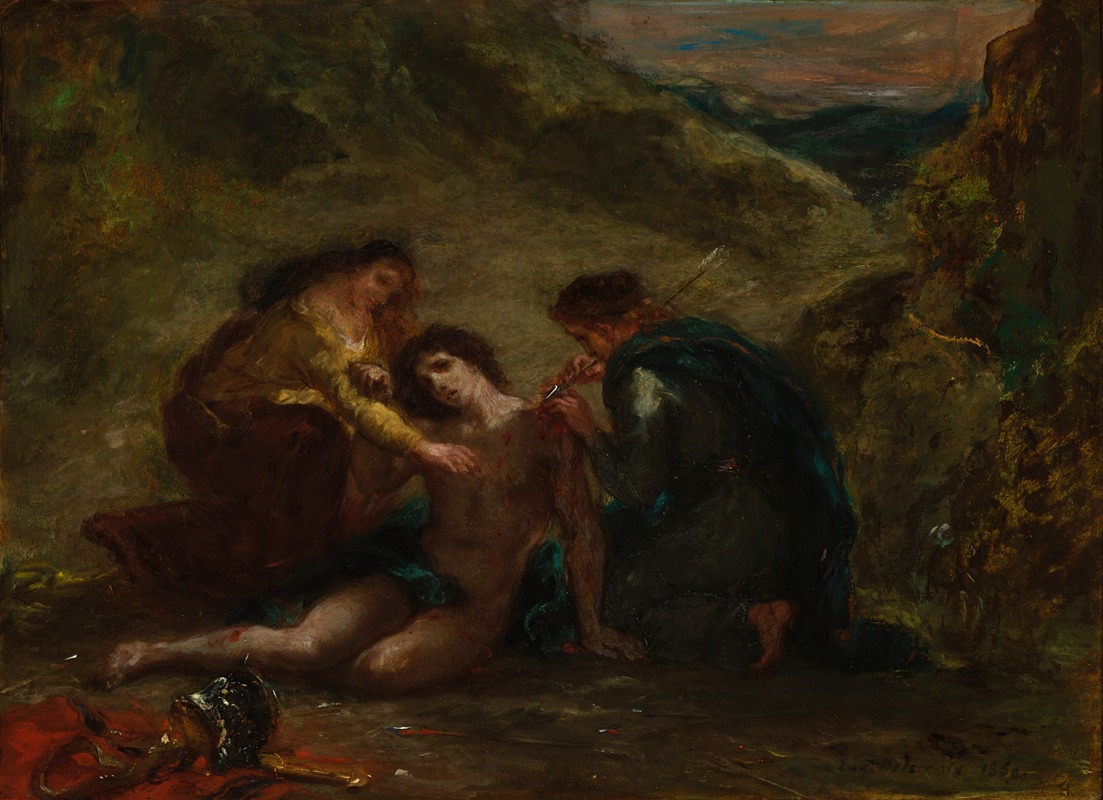
St. Sebastian with St. Irene and Attendant
A hand-painted replica of Eugène Delacroix’s masterpiece St. Sebastian with St. Irene and Attendant, meticulously crafted by professional artists to capture the true essence of the original. Each piece is created with museum-quality canvas and rare mineral pigments, carefully painted by experienced artists with delicate brushstrokes and rich, layered colors to perfectly recreate the texture of the original artwork. Unlike machine-printed reproductions, this hand-painted version brings the painting to life, infused with the artist’s emotions and skill in every stroke. Whether for personal collection or home decoration, it instantly elevates the artistic atmosphere of any space.
Eugène Delacroix, a prominent French Romantic artist, is known for his expressive brushstrokes and his fascination with themes of passion, violence, and exoticism. Among his many works, "St. Sebastian with St. Irene and Attendant" is a painting that reflects his interest in historical and religious subjects, although specific details about this particular painting are not extensively documented.
St. Sebastian is a popular subject in Christian art, often depicted as a martyr who was tied to a post or tree and shot with arrows. According to Christian tradition, he was a Roman soldier who converted to Christianity and was subsequently persecuted for his faith. After surviving the initial execution attempt, he was nursed back to health by St. Irene, another figure frequently depicted in art related to St. Sebastian. This narrative provides a dramatic and poignant scene that has inspired many artists over the centuries.
Delacroix's rendition of this subject would likely have been influenced by his Romantic sensibilities, emphasizing emotion and drama. His style is characterized by vivid color, dynamic compositions, and a focus on the emotional intensity of the scene. Delacroix often drew inspiration from historical and literary sources, and his works frequently explore themes of heroism and suffering, making the story of St. Sebastian a fitting subject for his artistic exploration.
While specific details about "St. Sebastian with St. Irene and Attendant" by Delacroix are scarce, it can be inferred that the painting would reflect his typical approach to composition and color. Delacroix was known for his ability to convey movement and emotion, often using contrasting colors and vigorous brushwork to create a sense of immediacy and intensity. His works often depict figures in dramatic poses, capturing moments of tension and release.
Delacroix's interest in religious and historical themes is evident in many of his other works, such as "The Death of Sardanapalus" and "Liberty Leading the People." These paintings showcase his ability to blend historical narrative with a Romantic emphasis on individual emotion and the sublime. In the context of "St. Sebastian with St. Irene and Attendant," Delacroix would likely have focused on the emotional interaction between the figures, highlighting the compassion of St. Irene and the suffering of St. Sebastian.
Although there is limited information available specifically about "St. Sebastian with St. Irene and Attendant," understanding Delacroix's broader body of work and his artistic approach provides insight into how he might have interpreted this subject. His paintings often explore the tension between suffering and redemption, a theme that is central to the story of St. Sebastian. Through his use of color, composition, and expressive brushwork, Delacroix would have sought to capture the emotional depth and drama inherent in this narrative.
In summary, while detailed information about "St. Sebastian with St. Irene and Attendant" by Eugène Delacroix is not readily available, the painting can be contextualized within his broader oeuvre. Delacroix's Romantic style and his interest in historical and religious themes suggest that his depiction of this subject would emphasize emotional intensity and dramatic composition, reflecting his unique artistic vision.










